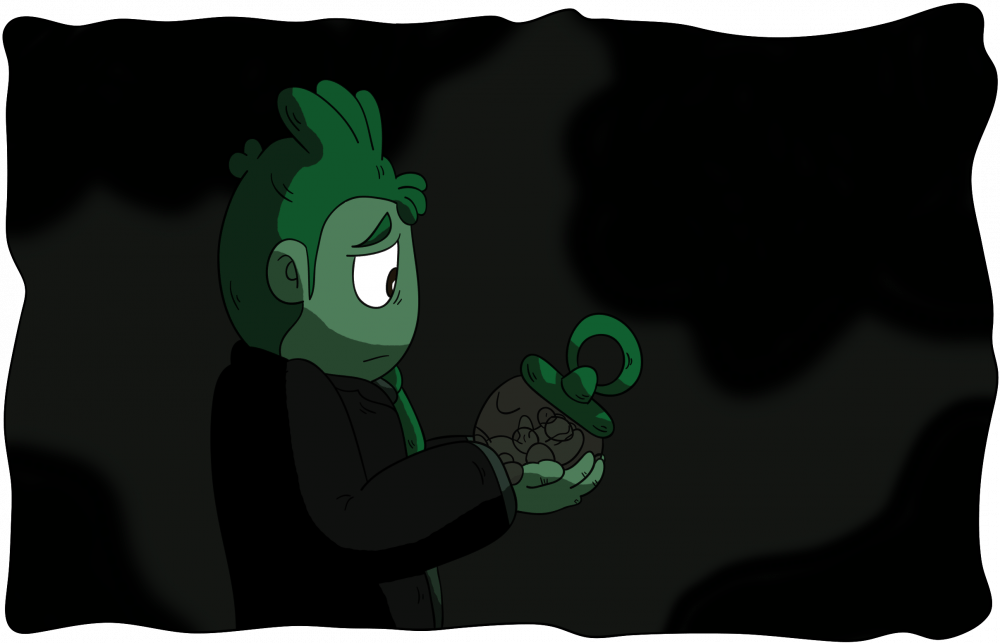Every Wednesday night, a group of students gathers into Studio 5 in the Radio/TV Building. They move the chairs into circles, pull out their laptops and make video games.
Eventually. The process usually takes two to four semesters.
These students are members of Hoosier Games, “an independent group of student developers,” according to its website.
“Anyone who is interested is welcome to join,” President Max Lancaster said. “There’s a role for everyone. You learn from the veterans, and then the novices become the veterans.”
The process they follow is pretty methodical, Lancaster said.
The first step they take to create a video game is pitch night: you share your ideas with the group, and settle on a core concept. Students are assigned to teams and work out timelines of major milestones in the game.
The second step is the “intense design phase,” Lancaster said. During this step, students create the minimum viable product, or the bare minimum product that could be released to the public.
The third step concerns “fleshing out the other stuff,” such as in-game collectibles and enemies, Lancaster said.
It’s normal for this process to take a while.
“Every time you add a new feature, there’s bugs,” he said.
Sometimes, a project dies. Lancaster said that can be good, offering a new start for programmers to clear their minds and pursue other ideas.
Next, students “ship” a game. This involves final polishing of content and getting the game to its audience.
There’s always something more you could do, Lancaster said, but you have to know when to call it a day and release it to the public.
“A game is never done, you just ship it,” he said.
Lancaster was a direct-admit to the Kelley School of Business and is a senior in marketing. Using these skills, he’s helping mold Hoosier Games to the needs of its members.
“We’re shifting our focus to be more marketing-oriented,” he said. The club is developing ways to teach its members how to market and pitch their games to possible investors, be it through word of mouth or campaigns on Kickstarter.
There are always outside factors: students graduate, programmers back off, teams lose interest in a project.
“We really wanna get the games done as quickly as possible,” Lancaster said.
There are few faculty members with backgrounds in the video game industry who help Hoosier Games where they can.
Edward Castronova, professor of telecommunications, laughingly called himself the “spiritual father” of the club.
“I was the one for many years who kind of got it going,” he said. “It was really shaky at the start.”
The club had little to no budget, and oftentimes club expenses came out of his own pocket, Castronova said.
That’s changed in the past few years, though, with the explosion in population of the club. It’s gone from around 30 members to this year’s membership of 70.
“The launch of the official game design program had a lot to do with it,” Castronova said. “We might just be in the take-off phase.”
Word of mouth has helped growth, and press from the game design major draws interest from students and the community.
Castronova tried for years to get the University to allocate more funds to the game design side of the Media School. The students are the loudest voices in favor.
“Look what the students are doing by themselves” Castronova said. “That’s the best argument a professor can make.”
There are only three regular faculty members to teach skills that students interested in designing video games need.
“What I would like to do is hire people to teach that stuff so students don’t have to teach themselves,” Castronova said.
And with the growing notoriety of IU’s game design major, that might just be a possibility. Attitudes about Indiana’s role in producing video games is slowly but surely changing, according to Lancaster.
“The Midwest used to be a place where people thought games went to die,” Lancaster said. “We have a lot more exposure just because of the game design major.”
Hoosier Games currently has a few projects in the work, Lancaster said. Those close to release include Katabasis, about a boy overcoming depression through the five stages of grief, and Hellpaws.
The head developer and producer of Hellpaws is Angela Lograsso.
You play as Sordello, a cat who flies through hell in a journey to reclaim his nine lives. He fights enemies by firing flaming hairballs.
“There’s a lot of dark and whimsical humor in the game,” Lograsso said.
Lograsso said the design began as a prototype for a class, and grew with feedback.
July 2016 is the expected release date, as the creators are making last-minute changes and polishes to the game.
Because Hoosier Games is separate from coursework, deadlines are often pushed back to accommodate other things that come up in the lives of programmers and designers, Lancaster said.
But that’s what the club is meant to do.
“Hoosier Games is a safe place to experiment,” he said. “At the end of the day, this is portfolio work.”






